The Internet of Things can improve everyday life, increase efficiency in industry processes and even contribute to the transformation of countries. It's of great importance for countries to plan their entry into the Internet of Things market so they can benefit from its potential.
The Internet of Things (IoT) can play a significant role in developing countries. Therefore, careful planning and timely involvement is of great importance. But what are the key factors for the successful entry of developing countries into the Internet of Things?
Introduction
The International Telecommunications Union (ITU) defines IoT as follows: “The IoT can be viewed as a global infrastructure for the information society, enabling advanced services by interconnecting (physical and virtual) things based on existing and evolving interoperable information and communication technologies (ICT)” (Source: Recommendation ITU-T Y.2060).
Wikipedia defines the Internet of things (IoT) as a "network of physical devices, vehicles, and other items embedded with electronics, software, sensors, actuators, and network connectivity which enable these objects to collect and exchange data."
IoT Trend
The Hype Cycle for Emerging Technologies 2017 by Gartner shows that the IoT platform is near "the peak of inflated expectations" and connected homes (as one of the IoT verticals that will produce a large amount of sensor data) has almost reached the peak as well (as illustrated in Figure 1 below).
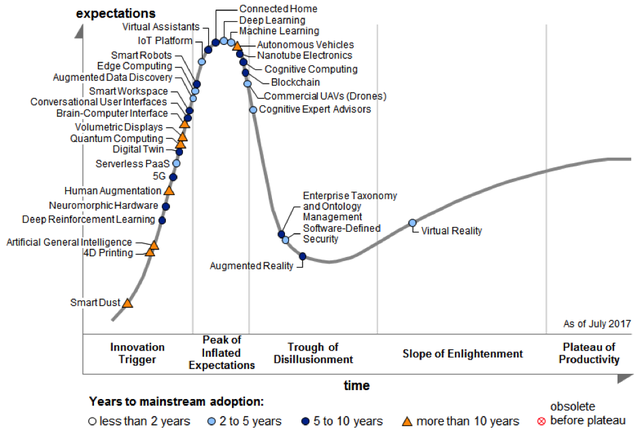
Figure 1: Hype cycle for emerging technologies by Gartner (Source: gartner.com)
The IoT platform is very important for countries. All of the data collected by billions of sensors will be stored and analysed. Therefore, countries have good reason to invest in the development of their national IoT platforms. This is particularly vital for developing countries who, since they typically lack the infrastructure for storing the relevant data, tend to rely on data centres located in other countries.
IoT Market Forecast
Cisco, GE, Gartner, and McKinsey have published forecasts of the value of the Internet of Things for the overall economy (see Figure 2 below).
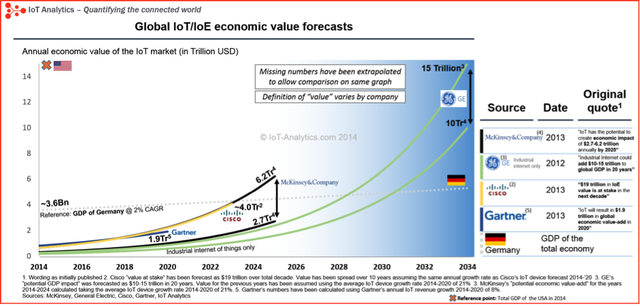
Figure 2: IoT market forecast: Economic value 2014-2035
In general, forecasters agree that IoT will have a massive economic impact. In both Cisco’s and McKinsey’s scenarios, the global value of IoT would surpass the total economy of Germany in less than 10 years. If GE’s high forecasts become reality, the value of the industrial Internet in 20 years will roughly reach the size of the US economy today. It is therefore noticeable that the Internet of Things will have a profound effect on the economies of countries.
Main Characteristics of Developing Countries
A developing country - also called a less developed country or an underdeveloped country - is a nation or a sovereign state with a less developed industrial base and a low Human Development Index (HDI) relative to other countries. The following list shows the main characteristics of developing countries:
- General Poverty: Developing countries are poor. GDP and Per Capita Income are at low level.
- High Dependence on Agriculture: Agriculture is the main occupation in developing countries.
- Underutilised Natural Resources: Most of the developing countries are rich in natural resources.
- Lack of Industries and Enterprises: The industrial sector in developing countries is at the primary stage of development.
- Lack of Capital and Technology: Capital deficiency is another common problem of developing countries.
- Lack of Basic Infrastructures: The factors that help for development are called infrastructures.
- Demographic Characteristics: There is high growth rate of population in developing countries.
- Socio-cultural Characteristics: Different kinds of social groups reside in a country.
- Dualistic Economy: All the sectors of economy have not been developed in developing countries.
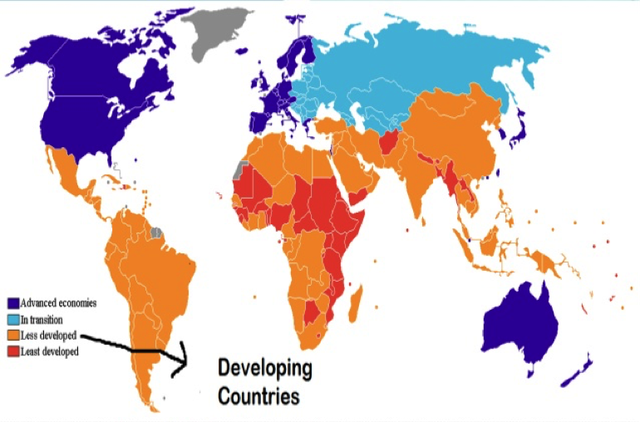
Figure 3: map of developing countries
IoT Features
In order to deploy IoT in a country, human resources are needed, and especially the energy and knowledge of young people. Young people often need special training to enter the job market. But it is important to understand that the IoT is not a new technology in itself. Instead it combines various technologies and it is used in all industries, not just ICT.
Often a start-up based approach is helpful for IoT deployment. Therefore a startup culture should be supported in order to facilitate IoT deployment. Another positive aspect is a mature community in a country that can embrace new technologies and support each other.
Looking in more detail at IoT technology, there are a number of aspects to take into account:
- IoT Hardware: In addition to sensor elements, other parts like boards, modules, IoT gateways etc. could be designed and implemented in most countries.
- IoT Network: Based on the type of network, it could be implemented by government and mobile operators (like NarrowBand IoT) or SME companies (Like LoRa & LoRaWAN).
- IoT Platform: It could be implemented in most countries (it needs data centres and server side cloud platforms).
- Applications and Services: It’s based on creativity and brainware.
- Data Analytics: Big Data analytics is based on brainware.
IoT Opportunities for Developing Countries
When we look at the resources and features need to deploy an IoT solutions and services in a country, we see that many developing countries have those:
- IoT needs creative young people - developing countries have them
- Smart agriculture is one of the main IoT verticals - developing countries are often based on agriculture
- IoT is often spread by startup companies - developing countries have this potential
- IoT needs brainware - developing countries often have educated young people
The Internet of Things can help bring about improved energy usage and resource management in a country, as well as increased performance in agriculture and other industries, and so can help poorer individuals to manage their expenses and save more money. Simultaneously, better management of resources and costs for governments in developing countries with IoT leads to development of urban services and the improvement of the quality of life of citizens. So IoT can decrease the social gap and can help the developing countries to get out of the bipolar economy.

Figure 4: There are many opportunities for developing countries to enter the Internet of Things
Key Factors for the Successful Entry of Developing Countries into the IoT
As we can see above, developing countries have a lot of promising pre-requisites for successfully entering the IoT market. However, a lot of things still need to be done in order to make it happen.
We need to train young people in the field of IoT and then use that young creative group of people. Startup companies have to be supported as well as creative venture capitals who invest in the IoT. Last but not least, the right technology choices have to be made.
Case Study: The IoT Academy of IRAN
The IoT Academy of IRAN started its activities in April 2015 with the aims of creating a "professional didactic ecosystem in the field of IoT" and “Cultural diffusion of IoT knowledge across the country and training of specialised people in the field of IoT has been recognised as an essential prerequisite for shaping the IoT market in the country”.
The IoT Academy of IRAN is providing practical workshops in all of the major aspects of IoT (see an example of one of these workshops below). It also actively raising the level of awareness through seminars in schools and universities.
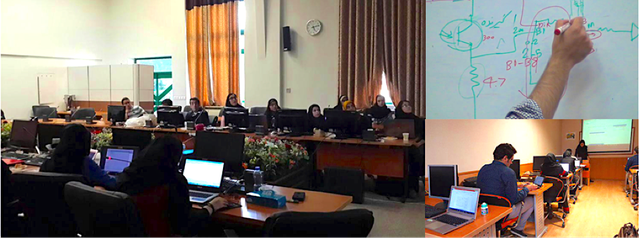
Figure 5: IoT Academy workshop
The Academy has also started some pilot projects in certain industries, for instance the oil and gas industry, aimed at the health of the employees: IoT based monitoring equipments for H2S, CH4, Co and Co2 gases have been developed for use in oil rigs in Iran. This project is now being finalised and the equipment will be installed shortly.
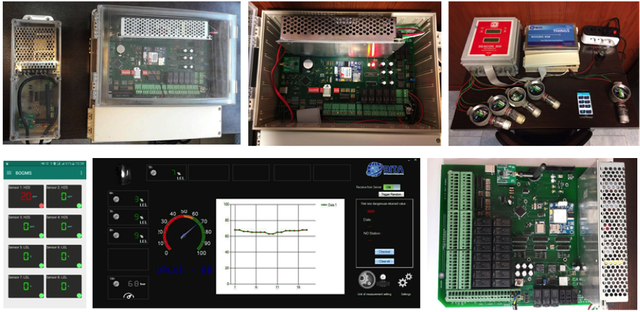
Figure 6: IoT based H2S & LEL Gas Detection System to be used in Iranian oil rigs
Other targeted projects are in the making aimed at improving life in rural areas for instance through smart care of patients and pregnant women, monitoring the quality of drinking water, optimal use of water resources, etc. There will also be an IoTKids project. Another idea is the Design of customised evaluation boards for teaching IoT concepts around the world, especially in developing countries. For many of these projects the IoT Academy is looking at collaborating with organisations in other countries to help disseminate IoT related knowledge.
Conclusion
For the successful entry of developing countries into the IoT market, widespread knowledge sharing is important. Training young people in the field of IoT and supporting a startup culture is essential for future development in this field as well as venture capitals to invest in IoT related products and ideas. This needs to encompass all aspects of the IoT: hardware, network, the underlying IoT platform, application & services, Big Data analytics. Considering the capabilities of the brainware of developing countries can not only help those countries themselves, but can further technical development worldwide.
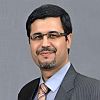
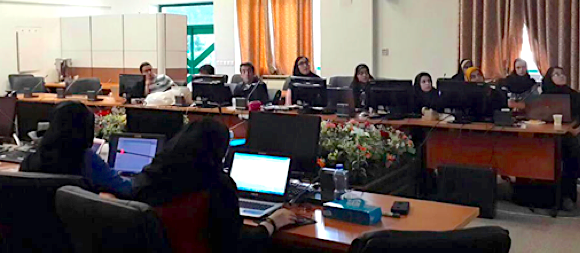
Comments 2
The comments section is closed for articles published more than a year ago. If you'd like to inform us of any issues, please contact us.
Azam musthafa •
Future developing ideas thanks
Anonymous •
Why did Egypt be in the less developing and Sudan is in the least developing? They don´t have anything makes them better than Sudan.